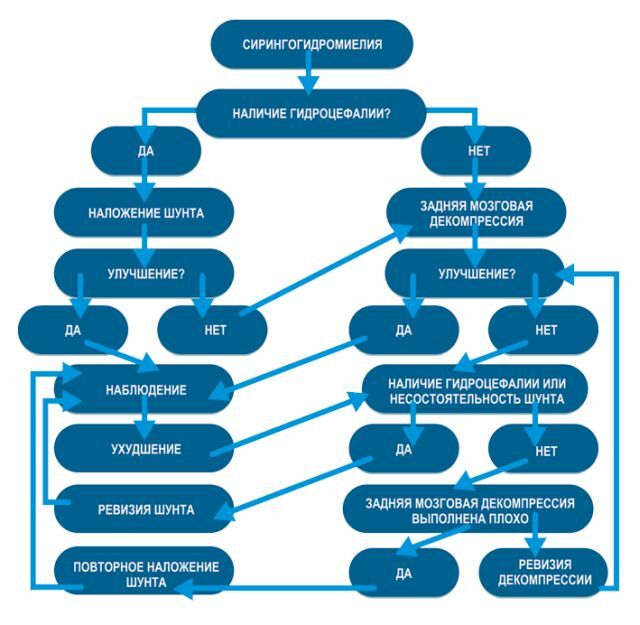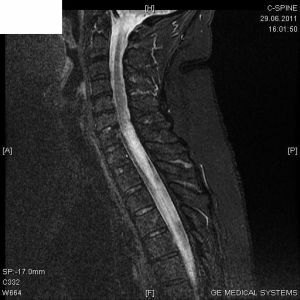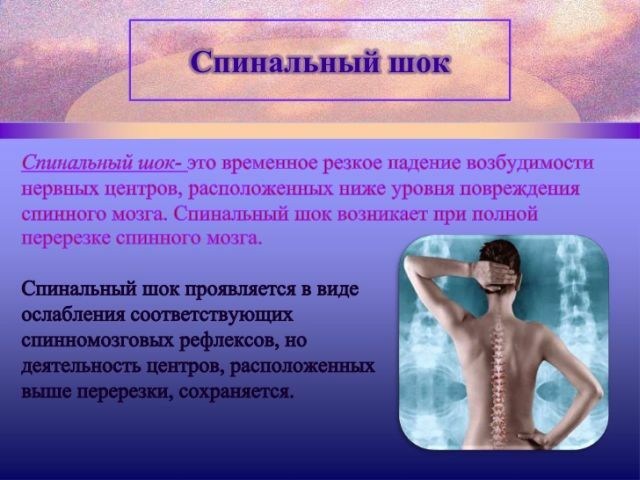 Famous physiologist and neurologist Charlie Edouard Brown-Sekar thanks to his fruitful work and diligence made a huge contribution to medical science.
Famous physiologist and neurologist Charlie Edouard Brown-Sekar thanks to his fruitful work and diligence made a huge contribution to medical science.
The achievement of the great scientist was the discovery and description of a serious illness in 1849, which caused the destruction of various parts of the spinal cord and brain. It was in honor of the neurologist, the disease was called the Brown-Sekar Syndrome.
content
- Features
- disease classification disorders
- Causes of disorders
- exhibit symptoms
- Diagnosing disorders
- complex of therapeutic measures
- Prediction for patient
Features
disease lateral hemisection of the spinal cord or syndrome Brown-Sequard is a disease in which there is losspillar of the spine and spinal cord.
The main feature of this pathology is that the lesion is localized only in half of the diameter of the spinal cord( that is, only a certain level of the spine suffers).
The disease is diagnosed only in 1-3% of cases of human spinal cord injuries. At the same time, the chances of getting sick, both in men and women, are exactly the same. The only exception is the case when a person is at risk( for example, one of the relatives was sick with this ailment).
Unfortunately, Brown-Sekar syndrome does not lend itself to full treatment in neglected cases. However, if a timely diagnosis of the disease and seek qualified medical care, the patient's life can be greatly facilitated and maintained his state of health in a satisfactory condition.
Classification of violation
Today, experts have identified several variants of the course of the Brown-Sekar syndrome: 
- Classical typology .Most often at this stage the patient has all the symptoms that are peculiar to the initial stages of the disease. The disease in this case proceeds without special complications and manifestations. Inverted typology .In this variant of the development of the disease, all the symptomatology that was characteristic in the classical version passes to the absolutely opposite side of the patient's body( that is, if the paralysis was earlier on the right, now it passes to the left side).
- Partial typology .In this case, the syndrome may not manifest itself in any way or be expressed in some parts of the body( limbs, for example).It can be called the complete opposite of the classical version and the inverted one.
In addition, the classification of pathology is also distinguished depending on the reasons that influenced its development:
- traumatic stage;
- tumor stage;
- infectious stage;
- hematologic stage.
Causes of development of
disorder There are a variety of factors that can trigger the development of spinal cord and spine disease, but among the entire list, special attention is given to the following:
- The most common causes of the disease are various bruises, fractures and sprains of the spine and spinal cord .Usually a person receives them as a result of a traffic accident, while playing sports or doing hard physical work.
- The presence of neoplasm in the spinal cord or spine of ( it does not matter whether it is benign or malignant).

- Development of infectious or inflammatory myelopathy .
- lesion of spinal cord .
- Change in normal blood circulation in the spinal cord ( becomes a consequence of a stroke or epidural hematoma).
- Contusion of SM ( spinal cord).
- Transmission of multiple sclerosis .
Regardless of the influence of adverse factors that triggered the development of pathology, there are risk factors that also in turn pose a danger to human health. These include:
- traumatic syndrome;
- presence of tumors and neoplasms;
- hematogenous syndrome;
- infectious and inflammatory processes in the body.
The further treatment and recovery of the patient depends on how correctly the specialist determines the causes and varieties of the disease.
Symptomatic
Brown-Sekar Syndrome has several stages of development in its development, each of which is characterized by the manifestation of certain signs of the disease.
The main symptoms of pathology include such manifestations( their intensity increases with time, and they manifest alternately):
- complete or partial paralysis of the body;
- reduced sensitivity( tactile and temperature);
- it is difficult for a patient to feel his weight and feel any vibrations that arise from passive motor acts;
- skin becomes reddish and becomes cold;
- because of the decrease or absence of motor activity, pressure ulcers begin to form;
- with the course of illness the patient ceases to feel pain;
- there is no any response to injury( for example, cuts).
This symptom may occur immediately or after a while( which is very rare).The patient's condition will deteriorate depending on how strong and irreversible are the disorders in the spine and spinal cord.

Diagnosis of violation
When you go to a medical institution, specialists first collect the patient's medical history. They are interested in how long the symptoms began to manifest themselves and with what intensity they develop.
It is also important to check the presence of various reflexes and sensitivity of all limbs. In order for the diagnosis to be correct, with full confidence and confirmation of the doctor, the patient will need to undergo a special course of medical examinations, they will allow to establish a clear picture of the disease and to appoint competent treatment.
Survey includes:
- X-ray examination of ( makes it possible to detect spinal injury in the early stages);
- carrying out computed tomography allows to identify problems not only in bone tissue, but also in muscles, nerve endings and vessels;
- MRI ( magnetic resonance imaging) today is considered the most informative, since it combines a lot of additional information that can not be obtained by the described methods.
Complex of therapeutic measures
 After the doctor receives the results of all the examinations, a further course of treatment of the patient is signed. In most cases, Brown-Sekar syndrome is treatable only by surgery.
After the doctor receives the results of all the examinations, a further course of treatment of the patient is signed. In most cases, Brown-Sekar syndrome is treatable only by surgery.
Looking at what caused the development of the disease, experts make a decision on the methods of conducting the operation, namely, what better tools to do this.
During surgical intervention, the surgeon will first remove the tumor or hematoma, only after that he will begin to restore the damaged spine.
Special operations, exercise therapy, physical therapy procedures, proper nutrition and good mood, which should be provided by close relatives and friends, help the patient to recover after such surgery.
Forecast for patient
The predictions for the Brown-Sekar syndrome are mixed. We can state with certainty only the fact that with due care of  for oneself and for one's health, the development of this pathology can be avoided.
for oneself and for one's health, the development of this pathology can be avoided.
For this it is necessary to be as attentive as possible at the wheel, to monitor your safety during work at the altitude and at the slightest deterioration of the state of health, immediately consult a doctor.
If symptoms start to manifest themselves with minimal force, it is necessary to apply for qualified help as soon as possible, because only the timely establishment of the diagnosis increases the chances of a full recovery and a happy life.



